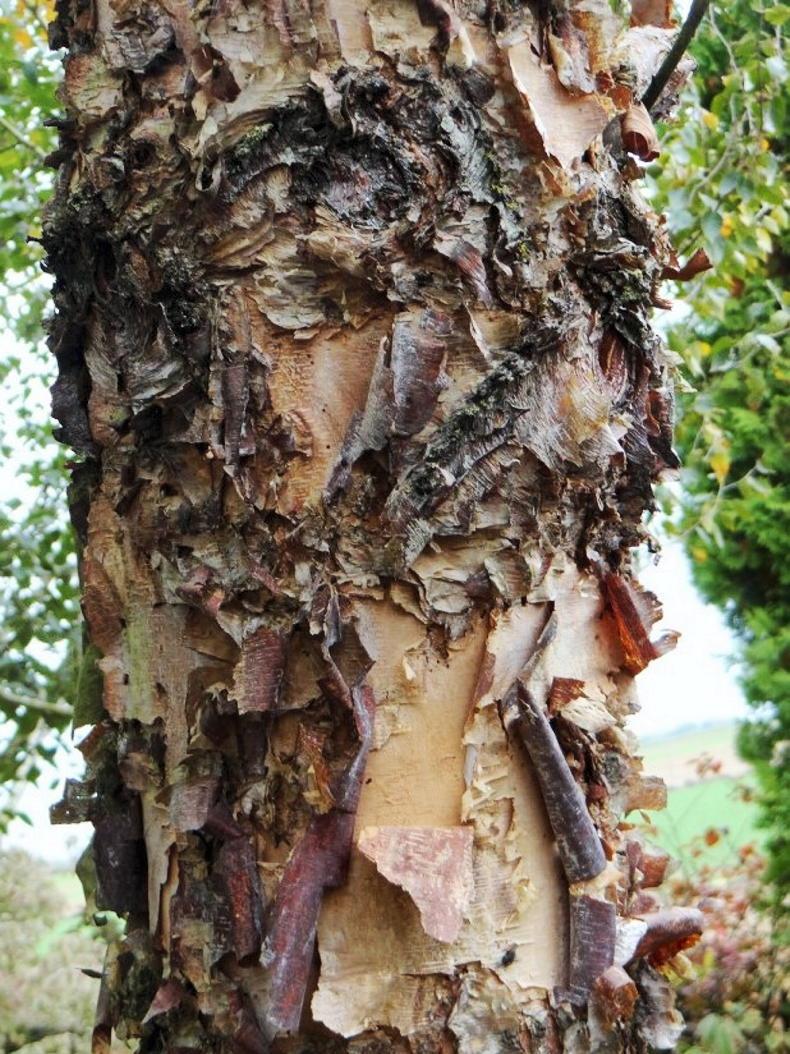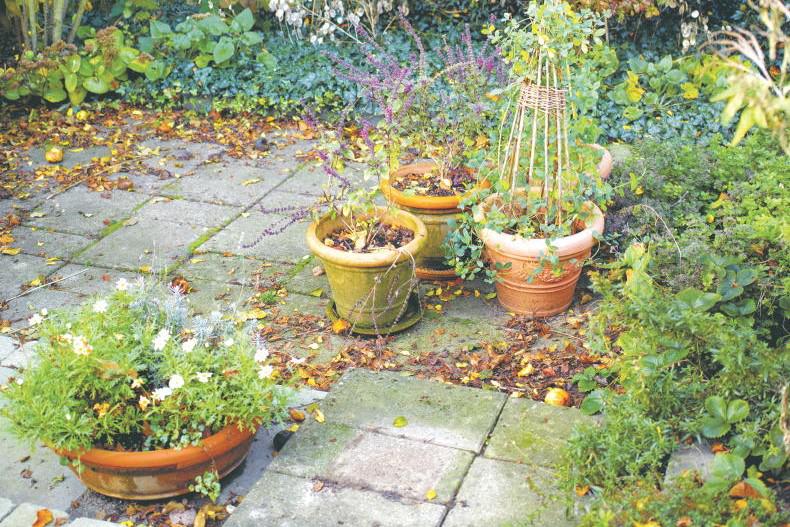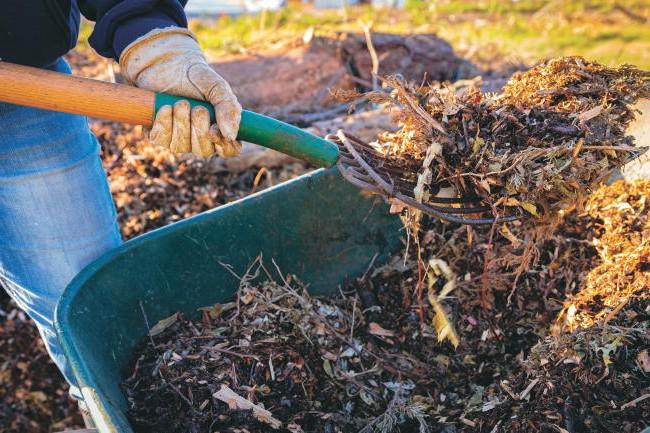After the seemingly incessant rainfall of recent months, waterlogging has become an increasing problem in our garden, as it has for gardeners everywhere.
These last weeks have seen water bubbling up from underground springs and some key plants have their roots almost permanently lying under water. Waterlogging occurs when water sits on the soil surface and drains too slowly or fails to drain at all. This can happen due to heavy rainfall, poor soil drainage, compacted soil, pockets of sticky, heavy clay soil, high groundwater levels or a combination of these factors, as is the case in our garden.
While flash floods that dissipate quickly won’t kill your plants, its prolonged periods where plants sit in water that you need to be concerned about.
When soil is waterlogged, plants literally drown. Water fills all the air spaces between the soil particles, preventing oxygen from reaching the roots. This inhibits their ability to absorb nutrients and water causing yellowing and wilting of leaves. It can also trigger root rot diseases and eventual death.
In addition, worms and other soil microorganisms are unable to function and important minerals are leached from the soil.

Beautiful peeling bark of the river birch, Betula nigra, which is very tolerant of waterlogged conditions / Mary Keenan
Improve soil structure
If your garden soil is waterlogged, you should not dig or walk on it until it dries out to avoid compacting it and worsening the conditions. If you must access waterlogged ground on foot, consider laying wooden planks or temporary paths of chipped bark to spread the load. You can relieve compaction and improve drainage by adding plenty of coarse grit, well-rotted garden compost or other organic matter.
In the last few years, we have been gradually working our way through mulching our borders with well-rotted farmyard manure. Ideally, we would mulch annually but in our large-size garden, we strive instead to mulch areas on a three-year cycle.
While the benefits aren’t instant, the parts of the garden where this has been done are now noticeably more free-draining during periods of sustained rainfall.
As a quick fix remedy to try help excess water penetrate deeper and drain away, we spike the soil around affected trees with a garden fork to create small holes about 10-15cm deep and fill them with lime-free, horticultural sand.
Where rainwater floods into the same area time and again, we have also been trying to hold back the water or divert it elsewhere with strategic placement of mounds of soil. But these are just short-term measures to try and minimise the potential loss of some of our more significant specimen plants.

Water accumulating around a wedding cake tree, Cornus controversa ‘Variegata’, a key specimen in Mary’s garden / Mary Keenan
Install drainage systems
Because we can’t move some of these more mature specimen shrubs and trees to a better position, the most effective, long-term solution will be to extend existing draining systems and install new ones. Some years back, we installed a network of sub-surface drainage pipes to carry away excess water from the lowest lying area of the garden into a purpose-made ornamental pond feature. The pond incorporates an overflow into a wetland area, dug out and developed within an adjacent farm paddock. Next spring, when ground conditions are favourable, we will extend this to incorporate new problem areas.
Where it isn’t feasible to connect into the piped drains, we will look at installing French drains. These simple drains are suitable for most gardens.
To build a French drain, dig a trench where you want the water to drain, ideally at the lowest point of the affected area, making sure it’s dug to follow a gradient of between 1 in 50 and 1 in 100. Optional is to line the trench with a permeable membrane, such as Terram, to prevent the trench silting up. Fill the trench almost to the surface with graded aggregate, starting with larger pieces of rubble at the bottom and finishing with coarse gravel towards the top. Fold the fabric over it and add a layer of gravel on top before topping off with backfilled topsoil to surface level.
Make the most of it
An alternative to all of the above might be to rethink your planting scheme. When waterlogged soil is a recurrent problem, rather than fight this, see it as a wonderful opportunity to create a bog garden, using plants that relish these growing conditions.
Choose shrubs and trees that thrive in wet soil such as dogwoods (varieties of Cornus alba and Cornus stolonifera), birch, willow and liquidambar. In some parts of our garden where the soil is permanently damp and prone to occasional waterlogging, we have successfully planted perennials like filipendula, ligularia, astilbe, aruncus, rodgersia, hosta, some perennial lobelia, primula, rheum, carex, zantedeschia, various species of iris and certain ferns including Osmunda regalis and Matteuccia struthiopteris. These plants are naturally adapted to wetter environments and can help mitigate the impact of excess moisture on the soil.
marykeenan@irishgarden.ie
Apply a thick covering of mulch for winter protection over the crowns of plants that are borderline hardy such as Agapanthus,
Kniphofia, Eucomis and Phygelius before hard frost arrives. Scoop fallen leaves and plant debris from ponds. Clean pond pumps and store them for winter.Check that tree stakes and ties are secure to withstand winter gales. Ensure ties are not strangling trunks or branches and loosen if necessary.Many garden clubs around the country will hold Christmas Gala floral demonstrations over the coming weeks. Check out listings in The Irish Garden magazine,
local newspapers, club websites and social media. Events during November include:
• Tuesday, 14 November
Cork Flower Club’s Christmas Gala Floral Demonstration by Christine Hughes, AOIFA, titled ‘Fairy lights on Winter Nights’.
Time: 8pm. Venue: Rochestown Park Hotel, Rochestown Road, Cork. Tickets €20, available on the door.
• Wednesday, 15 November
Co Wexford Garden & Flower Club’s Christmas Gala Floral Demonstration titled ‘A Christmas Carol Collection’ by Sharon O’Sullivan, AOIFA . Time: 8pm. Venue: Riverside Park Hotel, Enniscorthy, Co. Wexford. Admission: members €10, non-members €15.
Read more
Mary's Garden Diary: valuing professional gardeners
Going out in a blaze of glory
After the seemingly incessant rainfall of recent months, waterlogging has become an increasing problem in our garden, as it has for gardeners everywhere.
These last weeks have seen water bubbling up from underground springs and some key plants have their roots almost permanently lying under water. Waterlogging occurs when water sits on the soil surface and drains too slowly or fails to drain at all. This can happen due to heavy rainfall, poor soil drainage, compacted soil, pockets of sticky, heavy clay soil, high groundwater levels or a combination of these factors, as is the case in our garden.
While flash floods that dissipate quickly won’t kill your plants, its prolonged periods where plants sit in water that you need to be concerned about.
When soil is waterlogged, plants literally drown. Water fills all the air spaces between the soil particles, preventing oxygen from reaching the roots. This inhibits their ability to absorb nutrients and water causing yellowing and wilting of leaves. It can also trigger root rot diseases and eventual death.
In addition, worms and other soil microorganisms are unable to function and important minerals are leached from the soil.

Beautiful peeling bark of the river birch, Betula nigra, which is very tolerant of waterlogged conditions / Mary Keenan
Improve soil structure
If your garden soil is waterlogged, you should not dig or walk on it until it dries out to avoid compacting it and worsening the conditions. If you must access waterlogged ground on foot, consider laying wooden planks or temporary paths of chipped bark to spread the load. You can relieve compaction and improve drainage by adding plenty of coarse grit, well-rotted garden compost or other organic matter.
In the last few years, we have been gradually working our way through mulching our borders with well-rotted farmyard manure. Ideally, we would mulch annually but in our large-size garden, we strive instead to mulch areas on a three-year cycle.
While the benefits aren’t instant, the parts of the garden where this has been done are now noticeably more free-draining during periods of sustained rainfall.
As a quick fix remedy to try help excess water penetrate deeper and drain away, we spike the soil around affected trees with a garden fork to create small holes about 10-15cm deep and fill them with lime-free, horticultural sand.
Where rainwater floods into the same area time and again, we have also been trying to hold back the water or divert it elsewhere with strategic placement of mounds of soil. But these are just short-term measures to try and minimise the potential loss of some of our more significant specimen plants.

Water accumulating around a wedding cake tree, Cornus controversa ‘Variegata’, a key specimen in Mary’s garden / Mary Keenan
Install drainage systems
Because we can’t move some of these more mature specimen shrubs and trees to a better position, the most effective, long-term solution will be to extend existing draining systems and install new ones. Some years back, we installed a network of sub-surface drainage pipes to carry away excess water from the lowest lying area of the garden into a purpose-made ornamental pond feature. The pond incorporates an overflow into a wetland area, dug out and developed within an adjacent farm paddock. Next spring, when ground conditions are favourable, we will extend this to incorporate new problem areas.
Where it isn’t feasible to connect into the piped drains, we will look at installing French drains. These simple drains are suitable for most gardens.
To build a French drain, dig a trench where you want the water to drain, ideally at the lowest point of the affected area, making sure it’s dug to follow a gradient of between 1 in 50 and 1 in 100. Optional is to line the trench with a permeable membrane, such as Terram, to prevent the trench silting up. Fill the trench almost to the surface with graded aggregate, starting with larger pieces of rubble at the bottom and finishing with coarse gravel towards the top. Fold the fabric over it and add a layer of gravel on top before topping off with backfilled topsoil to surface level.
Make the most of it
An alternative to all of the above might be to rethink your planting scheme. When waterlogged soil is a recurrent problem, rather than fight this, see it as a wonderful opportunity to create a bog garden, using plants that relish these growing conditions.
Choose shrubs and trees that thrive in wet soil such as dogwoods (varieties of Cornus alba and Cornus stolonifera), birch, willow and liquidambar. In some parts of our garden where the soil is permanently damp and prone to occasional waterlogging, we have successfully planted perennials like filipendula, ligularia, astilbe, aruncus, rodgersia, hosta, some perennial lobelia, primula, rheum, carex, zantedeschia, various species of iris and certain ferns including Osmunda regalis and Matteuccia struthiopteris. These plants are naturally adapted to wetter environments and can help mitigate the impact of excess moisture on the soil.
marykeenan@irishgarden.ie
Apply a thick covering of mulch for winter protection over the crowns of plants that are borderline hardy such as Agapanthus,
Kniphofia, Eucomis and Phygelius before hard frost arrives. Scoop fallen leaves and plant debris from ponds. Clean pond pumps and store them for winter.Check that tree stakes and ties are secure to withstand winter gales. Ensure ties are not strangling trunks or branches and loosen if necessary.Many garden clubs around the country will hold Christmas Gala floral demonstrations over the coming weeks. Check out listings in The Irish Garden magazine,
local newspapers, club websites and social media. Events during November include:
• Tuesday, 14 November
Cork Flower Club’s Christmas Gala Floral Demonstration by Christine Hughes, AOIFA, titled ‘Fairy lights on Winter Nights’.
Time: 8pm. Venue: Rochestown Park Hotel, Rochestown Road, Cork. Tickets €20, available on the door.
• Wednesday, 15 November
Co Wexford Garden & Flower Club’s Christmas Gala Floral Demonstration titled ‘A Christmas Carol Collection’ by Sharon O’Sullivan, AOIFA . Time: 8pm. Venue: Riverside Park Hotel, Enniscorthy, Co. Wexford. Admission: members €10, non-members €15.
Read more
Mary's Garden Diary: valuing professional gardeners
Going out in a blaze of glory











SHARING OPTIONS